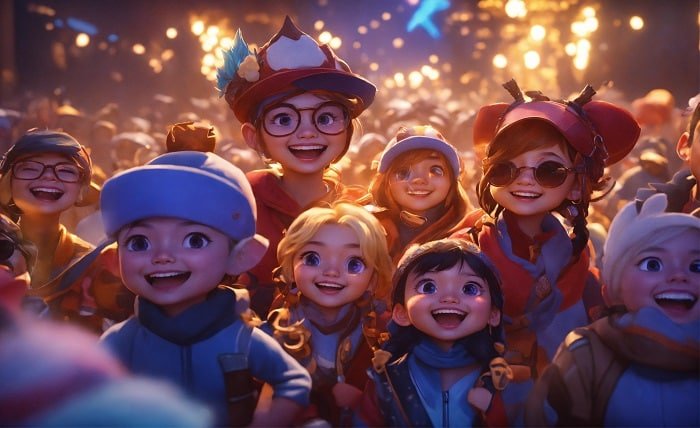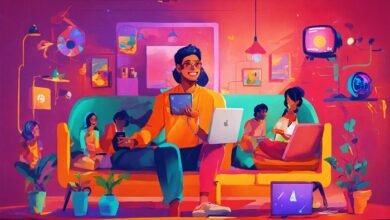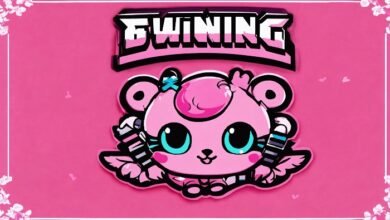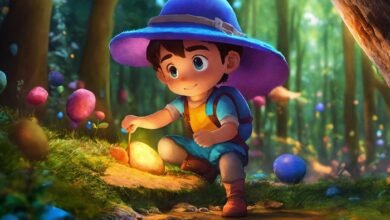The Fascinating World of Toons: A Journey Through Animation History

Introduction
Toons, or animated cartoons, have been a cornerstone of entertainment for over a century. From the early black-and-white silent animations to today’s CGI marvels, toons have captivated audiences of all ages. They are not just mere children’s entertainment; they hold cultural significance, influence societal norms, and provide a unique form of storytelling.
The Evolution of Toons
The history of toons dates back to the early 20th century with pioneers like Winsor McCay and his groundbreaking work, “Gertie the Dinosaur.” The introduction of synchronized sound in the 1920s, led by Walt Disney’s “Steamboat Willie,” marked a significant evolution in toons. Over the decades, toons transitioned from hand-drawn cells to digital animation, continually pushing the boundaries of creativity and technology.
Iconic Toons Through the Ages
Certain toons have transcended time, becoming iconic symbols of their eras. Characters like Mickey Mouse, Bugs Bunny, and Tom and Jerry have not only entertained generations but have also become cultural icons. These toons reflect the social and political climates of their times, offering both escapism and commentary.
Toons and Their Cultural Impact
Toons are more than just entertainment; they are a reflection of culture. Shows like “The Simpsons” and “South Park” provide satirical insights into society, politics, and human behavior. Toons have the unique ability to tackle serious subjects with humor and creativity, making them powerful tools for cultural commentary.
The Art of Toon Creation
Creating toons is a meticulous art form that involves a blend of creativity and technical skill. From storyboarding and character design to voice acting and animation, each step is crucial in bringing toons to life. This section delves into the process, highlighting the talents and technologies behind your favorite toons.
Toons in the Digital Age
The advent of digital technology has revolutionized the world of toons. Computer-generated imagery (CGI) and 3D animation have opened new horizons for toon creation. Streaming platforms like Netflix and Disney+ have also expanded access to toons, allowing for a global audience and diverse content.
Toons Across Cultures
Toons are a universal language, transcending geographical and cultural boundaries. From Japan’s anime to France’s “Asterix,” toons reflect the unique art styles and storytelling traditions of their cultures. This section explores how different cultures influence and are influenced by toons.
Educational Value of Toons
Beyond entertainment, toons can be educational. Shows like “Sesame Street” and “Dora the Explorer” use toons to teach children valuable lessons and skills. Educational toons are designed to be engaging and fun, making learning an enjoyable experience.
The Future of Toons
The future of toons looks promising with advancements in virtual reality (VR) and augmented reality (AR). These technologies offer immersive experiences, allowing viewers to interact with toons in ways previously unimaginable. This section discusses the potential innovations and trends that will shape the future of toons.
Conclusion
Toons have a timeless appeal that continues to evolve and captivate. They are more than just drawings; they are stories, characters, and worlds that reflect our dreams, fears, and aspirations. The magic of toons lies in their ability to entertain, educate, and inspire across generations.
FAQs
1. What was the first toon ever created?
The first toon ever created is often credited to “Gertie the Dinosaur” by Winsor McCay in 1914, though earlier animations existed.
2. How have toons evolved over time?
Toons have evolved from hand-drawn animations to sophisticated CGI and 3D animations, incorporating advanced technology and storytelling techniques.
3. Why are toons important in culture?
Toons reflect and influence culture by providing entertainment, social commentary, and educational content, making them significant in shaping societal values and norms.
4. How do different cultures approach toon creation?
Different cultures bring unique art styles, storytelling traditions, and cultural themes to toons, resulting in a diverse and rich array of animated content.
5. What is the future of toons?
The future of toons is likely to involve more immersive experiences through VR and AR, expanding the ways in which audiences can interact with and experience animated content.





